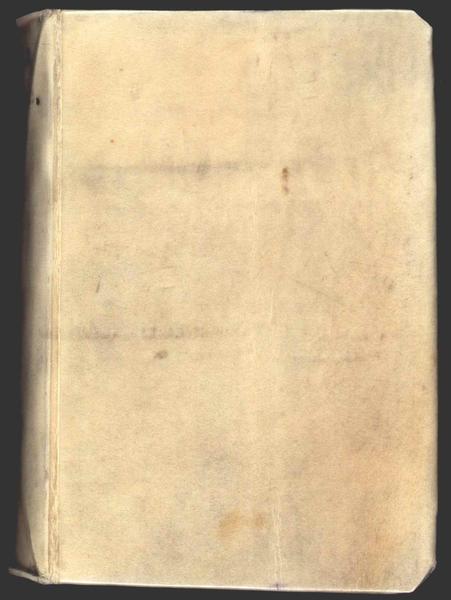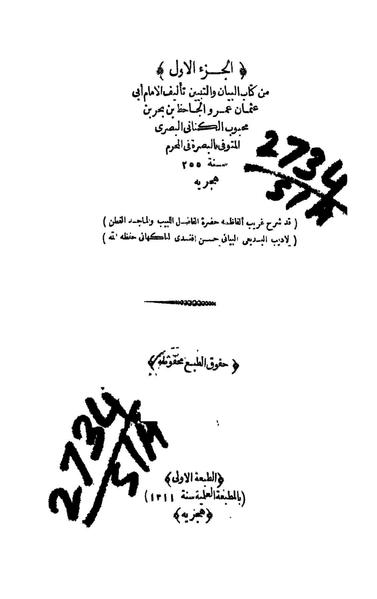 1
1title: Koran folio
artist: unknown
date: 9th century - 10th century
medium: Technique Ink and=gold parchment
dimensions: Size cm height=22.5 width=29.7
current location: Institution:Freer Gallery of Art
source: link
credit: link
license:Public domain
 2
2title: Islamic Chapter Heading for Chapter 26 (Surat al-shu'ara') - Walters W55518B - Full Page
artist:
Anonymous (Islamic)date: 5th century AH/AD 11th century-6th century AH/AD 12th century (Abbasid Caliphate)
medium: ink and pigments on brown laid paper
dimensions: size cm height=16.5 width=10.5
current location: Acquired by Henry Walters
credit: Walters Art Museum:
 Home page
Home page  Info about artwork
Info about artworklicense:Public domain
 3
3title: Islamic Text Page with Illuminated Heading - Walters W55232B - Full Page
artist:
Anonymous (Islamic)date: 3rd century AH/AD 9th century (Abbasid Caliphate)
medium: Technique ink and=pigments on=parchment
dimensions: size cm height=13.5 width=21
current location: Acquired by Henry Walters
credit: Walters Art Museum:
 Home page
Home page  Info about artwork
Info about artworklicense:Public domain
 4
4title: Islamic Illuminated Frontispiece of Geometrical Design - Walters W5541A - Full Page
artist:
Anonymous (Islamic)date: late 3rd century AH/AD 9th century (Abbasid Caliphate)
medium: Technique ink and=pigments on=parchment
dimensions: size cm height=17.5 width=27.5
current location: Acquired by Henry Walters
credit: Walters Art Museum:
 Home page
Home page  Info about artwork
Info about artworklicense:Public domain
 5
5title: Islamic Illuminated Incipit and Chapter Heading - Walters W5541B - Full Page
artist:
Anonymous (Islamic)date: late 3rd century AH/AD 9th century (Abbasid Caliphate)
medium: Technique ink and=pigments on=parchment
dimensions: size cm height=17.5 width=27.5
current location: Acquired by Henry Walters
credit: Walters Art Museum:
 Home page
Home page  Info about artwork
Info about artworklicense:Public domain
 6
6title: Islamic Leaf from Qur'an - Walters W55452B - Full Page
artist:
Anonymous (Islamic)date: late 3rd century AH/AD 9th century (Abbasid Caliphate)
medium: Technique ink and=pigments on=parchment
dimensions: size cm height=17.5 width=27.5
current location: Acquired by Henry Walters
credit: Walters Art Museum:
 Home page
Home page  Info about artwork
Info about artworklicense:Public domain
 7
7title: Page from a manuscript of the Qur'an (7 190-195) LACMA M.73.5.515
artist: unknown
date: Late 8th century
dimensions: 12 5/8 x 15 5/8 in. (32. 0 x 39.6 cm)
current location: Institution:Los Angeles County Museum of Art
source: *Image: link *Gallery: link Wayback|url=http%3A//collections.lacma.org/node/239663|date=20171007213445
credit: Image: link Gallery: link archive copy
description:
- 'abbasid Caliphate, late 8th century
- Manuscripts
- Ink on parchment
- The Nasli M. Heeramaneck Collection, gift of Joan Palevsky (M.73.5.515)
- Islamic Art
- Currently on public view: Ahmanson Building, floor 4
license:Public domain
 8
8title: Compendium of Medical Texts by Mesue, with Additional Writings by Various Authors
artist: Champier, Symphorien, 1472?-approximately 1535
date: 16 May 1523
medium: ru 1=Книги fr 1=Livres en 1=Books zh 1=图书 pt 1=Livros ar 1=كتب es 1=Libros
dimensions: en 1=695 pages ; 15 centimeters
current location: ru|1=Национальная библиотека Катара fr|1=Bibliothèque nationale du Qatar en|1=Qatar National Library zh|1=卡塔尔国家图书馆 pt|1=Biblioteca Nacional do Catar ar|1=مكتبة قطر الوطنية es|1=Biblioteca Nacional de Catar
description: This compendium of medical texts was printed in Lyon, in the shop of Benoît Bonyn (active 1523–44) in 1523. The major part and most significant text is by the renowned Nestorian Persian physician Yūḥannā Ibn Māsawayh (circa 790–857), known in the Latin West as Mesue, who was born in Samarra, present-day Iraq. According to al-Qiftī, Yūḥannā’s father, Abu Yūḥannā Māsawayh, a physician at the famed medical center at Jundīshāpūr (in southwest Persia, near modern Dezful) was asked to establish a hospital in Baghdad during the reign of Caliph Hārūn al-Rashīd (ruled 786–809). Ibn Māsawayh continued the work of his father in Baghdād, teaching medicine, composing medical works, and treating patients. Ibn Māsawayh began his career at the court of Hārūn al-Rashīd, and remained at the abbasid court during the reigns of al-Ma’mūn, al-Muʻtaṣam, al-Wāthiq, and al-Mutawakkil. Ibn Māsawayh wrote many medical works, a large number of which survive only as Latin translations. Among his works are al-Nawādir al-ṭibbiya (Medical rarities), Kitāb al-azminah (The book of times), which is on Islamic calendrical science, Kitāb fi al-judhām (Book on Leprosy), and Kitab al-tashrīh (Book of anatomy). His al-Qrabādhīn (Book on combined medications) was written in 22 chapters. In the Latin edition presented here, the work is reduced to 12 chapters, starting with electuaries and opiates and ending with a chapter on oils. The book is printed from woodblocks, with the title in red and black. The cover page has an ownership signature and some notes, with two small stamps near the title. The last 30 or so pages of this work (comprising the Summula of Jacobi and the Modus medendi Cophonis) may have been printed separately—perhaps in Florence, as indicated by the coat of arms depicting the Florentine fleur-de-lys—and then bound with the remainder of the work in a single volume. Of the other authors presented in this volume, Petrus de Abano (circa 12570–circa 1315) was a notable medieval scholar. He was a philosopher, astrologer, and a professor of medicine in Padua, who was posthumously convicted by the Inquisition and burned in effigy.
Medicine, Arab; Medicine, Medievallicense:Public domain
 9
9title: The Book of Eloquence and Oratory
artist: Jāḥiẓ, died 868 or 9
date: between 1893 and 1895
medium: ru 1=Книги fr 1=Livres en 1=Books zh 1=图书 pt 1=Livros ar 1=كتب es 1=Libros
dimensions: en 1=24 centimeters
current location: ru|1=Александрийская библиотека fr|1=Bibliotheca Alexandrina en|1=Bibliotheca Alexandrina zh|1=亚历山大图书馆 pt|1=Biblioteca de Alexandria ar|1=مكتبة الإسكندرية es|1=Biblioteca de Alejandría
description: Abu Uthman Amr ibn Bahr al-Kinani (776–869 AD; 163–255 AH), nicknamed Al-Jahiz for his bulging eyes, was a leading literary figure who lived during the early abbasid era. He was born and died in Basra, Iraq. It was said that his grandfather was a slave from East Africa. Al-Jahiz was a prolific writer on subjects ranging from theology, to politics, to manners, who left many highly significant works. He is credited with having profoundly shaped the rules of Arabic prose. Al-Jahiz’s Al-Bayan wa al-Tabyeen (The book of eloquence and oratory) is considered his second most important book after al-Hayawan (Animals). The book comprises selections from literary works, including orations, poems, commentaries, and treatises. It considers the rhetoric and oratory of the major public figures of the Islamic world. The book helped to establish the early scholarly foundations for Arabic rhetoric and language philosophy.
Arabic literature; Arabic poetry; Eloquence; Oratory; Poetry; Rhetoriclicense:Public domain

title: Egypt or Syria, Umayyad or Abbasid period, 8th century Nude Female Dancers from a Tunic - 1953.332 - Cleveland Museum of Art
artist: unknown
date: 700s
medium: Complementary weft-faced plain weave with inner warps (samit); silk
dimensions: Overall: 15.5 x 14 cm (6 1/8 x 5 1/2 in.)
current location: institution:Cleveland Museum of Art
source: link
credit: link
license:
CC0





